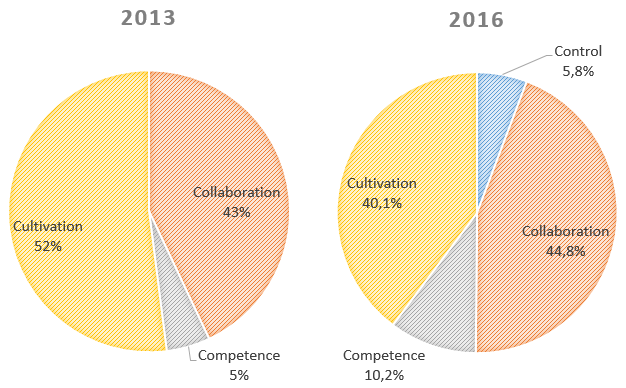Get in touch
At AOE we attach great importance to our corporate culture with all of its aspects of an optimal development of our employees, encouraging initiative and self-organization, and culminating in a mutually beneficial, value-creating partnership with our customers. Only if the existing culture makes these aspects possible, can we actually offer the excellence that our customers have grown accustomed to and which makes us successful.
Just as the various corporate cultures don’t fit with every company, a specific culture can lead to more or less successful company. At the same time, a company can only develop in an optimal way if the existing culture matches the corporate goals and -organization.
AOE has experienced rapid growth in the past few years, which is reflected both in employee- and revenue figures. This growth requires a continuous adaptation of our corporate organizational structure. And, since we don’t want to run the risk of upsetting the balance among corporate goals, -organization and -culture, we conduct an internal survey in regular intervals focusing on our existing culture. We want to know whether the corporate culture is changing with the growth of the company, positively or negatively, and which conclusions we can draw from this information. After 2013, we now carried out another such internal survey in 2016.
There are numerous and varying culture models, we orient ourselves primarily on the Culture Model according to William E. Schneider (“The Reengineering Alternative”). Schneider describes organizational culture with the statement “How we do things around here in order to succeed.” For Schneider, organizational culture is closely linked to the way companies are led (Leadership) and with the ideas management has about how things in the company are supposed to work.
Schneider divides his Core Culture Modell in four cultures:
These are arranged in quadrants of a matrix with the axes decision orientation and value orientation. The decision orientation axis (horizontal) scrutinizes how a company makes decisions. This can occur people-oriented, that is self-determined, evolutionary, unconventional and considerate; or company-oriented, meaning formal, without emotion, fact-based and principled. The value orientation axis (vertical), on the other hand, focuses on which values are important to a company. On the one hand, this can be possibility-oriented, which means that a company acts out of conviction and pays attention to innovation, opportunities and inspiration. Or the axis can be reality-oriented. Here, the company emphasizes actual conditions, facts, previous experience and utility.
To find out which culture is prevalent in an organization or which culture is perceived by the employees, Schneider published a questionnaire, which the employees of AOE filled out anonymously. The results of the survey of 2016 showed a clear focus on Collaboration and Cultivation, with a clear trend toward People Orientation:
The comparison to the survey results of 2013 – taking into account that the company was significantly smaller – is as follows:

Our fundamental course is confirmed. Collaboration und Cultivation still represent our core cultures. However, it’s worth noting that there is a small increase of the Competence Culture to ten percent.
Of course the cultures don’t mean that organizational cultures such as Cultivation don’t have Competence or that a Collaboration Culture works without Control. In this model those respective cultural priorities are depicted that are targeted at the basic leadership style, values and processes. Ulf Schneider provides an excellent description of the importance and characteristics of the individual cultures on allesagil.net; here’s a short summary of the two cultures that are important to AOE:
Collaboration Culture
“We succeed by working together”
Prototype: Family or Sports Team
Cultivation Culture
“We succeed by growing people who fulfill our vision”
Prototype: Religious Collective, Community
We at AOE can identify ourselves with a number of these statements. We attach great importance to people, to our employees within the team, on a personal level in the partnership with our customers and in the interaction with the management team.
When weighing the options between potential and reality we consider both: We look for the best-possible solutions for our customers, without losing sight of the real circumstances. One example of this is planning projects: Based on both considerations we create must-have- and nice-to-have features for our solutions and then prioritize these according to the requirements.
We are very proud of the survey results, for they show that the agile corporate culture we aspire to continues to exist even during rapid growth. Agility is more than the introduction of Scrum, it is deeply embedded in our company DNA and is an active part of our daily work. We are convinced that excellence in software development expects exactly this mindset, a combination of Collaboration and Cultivation, in order to achieve a good performance in projects and to create that best-possible solution for our customers.